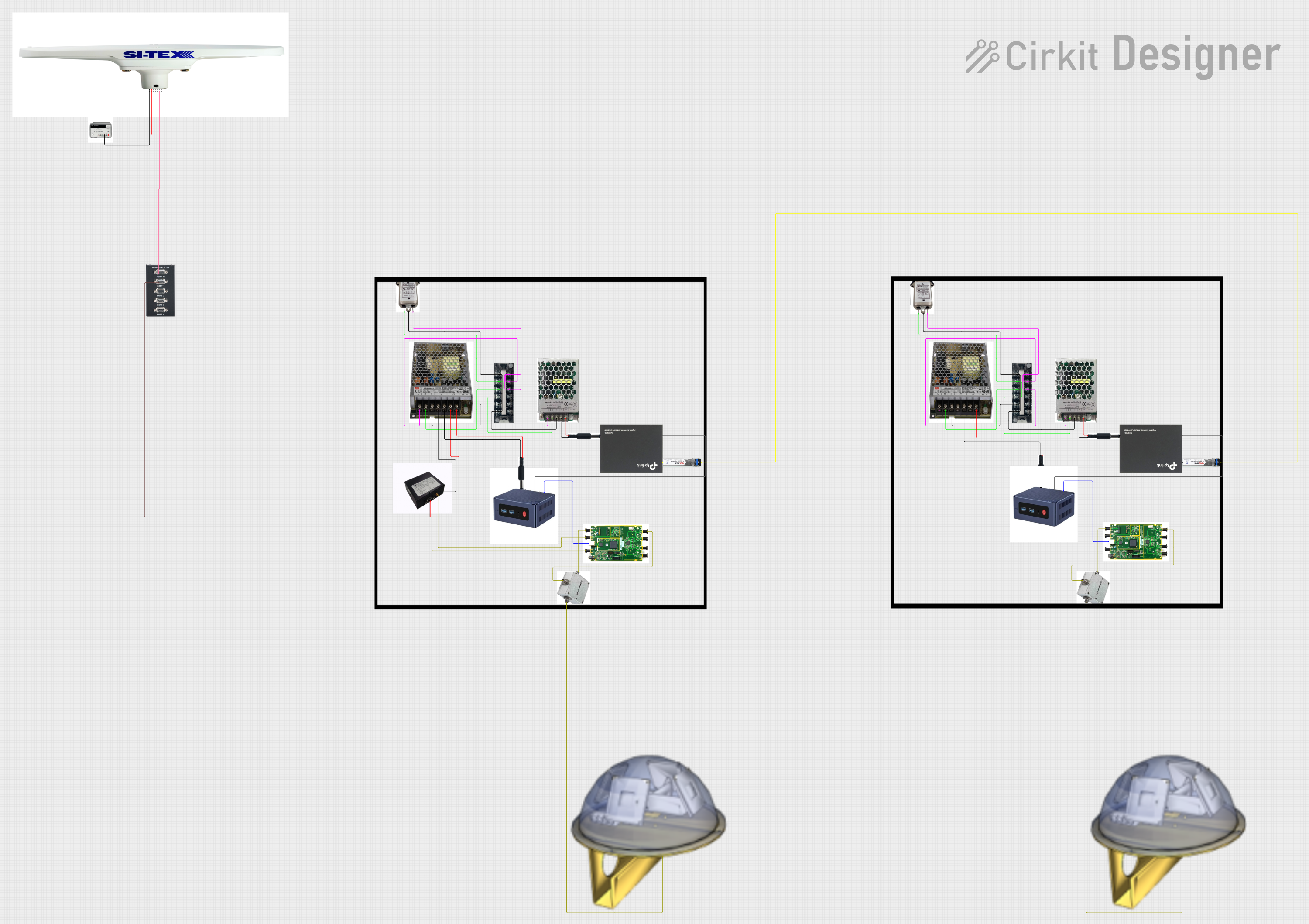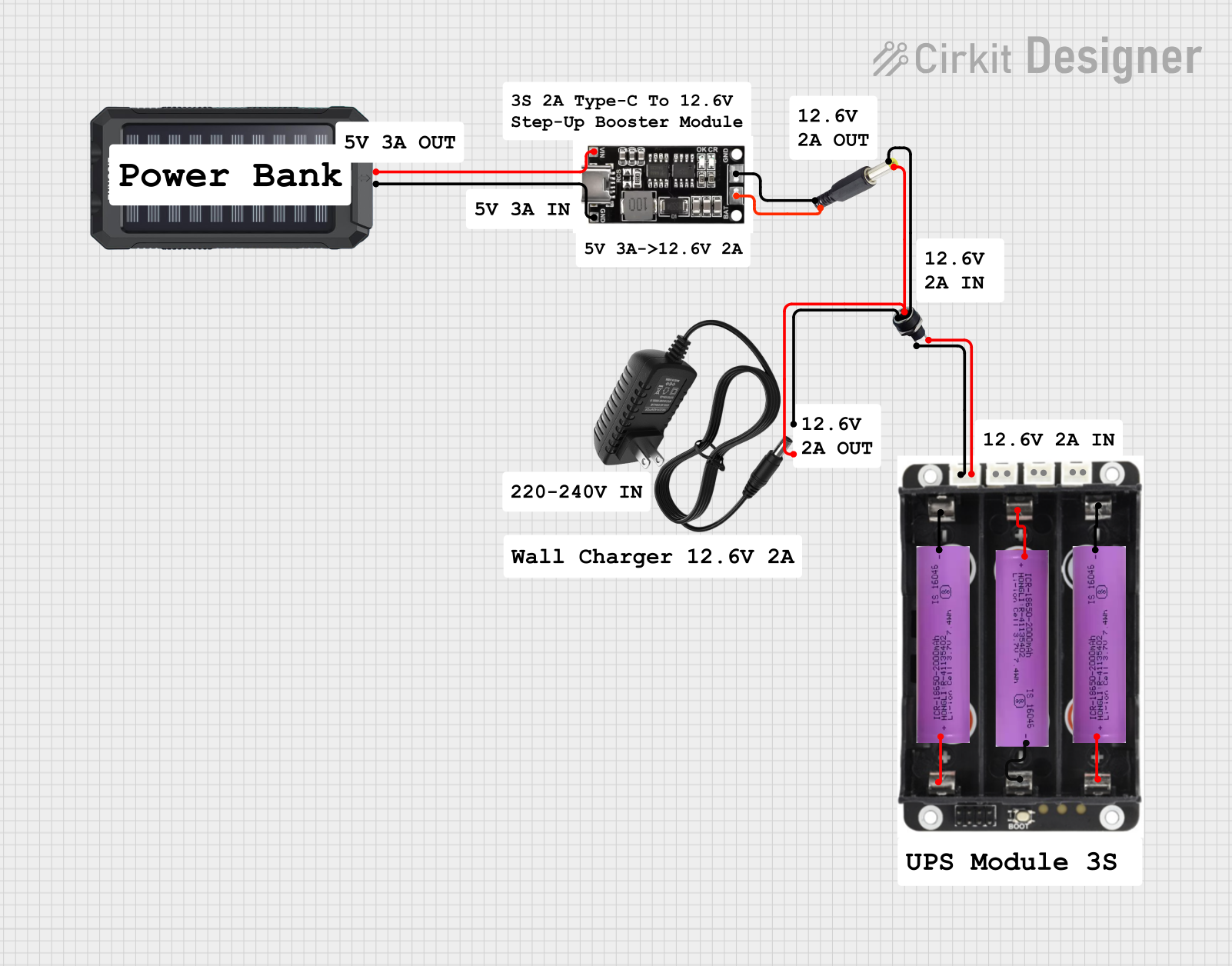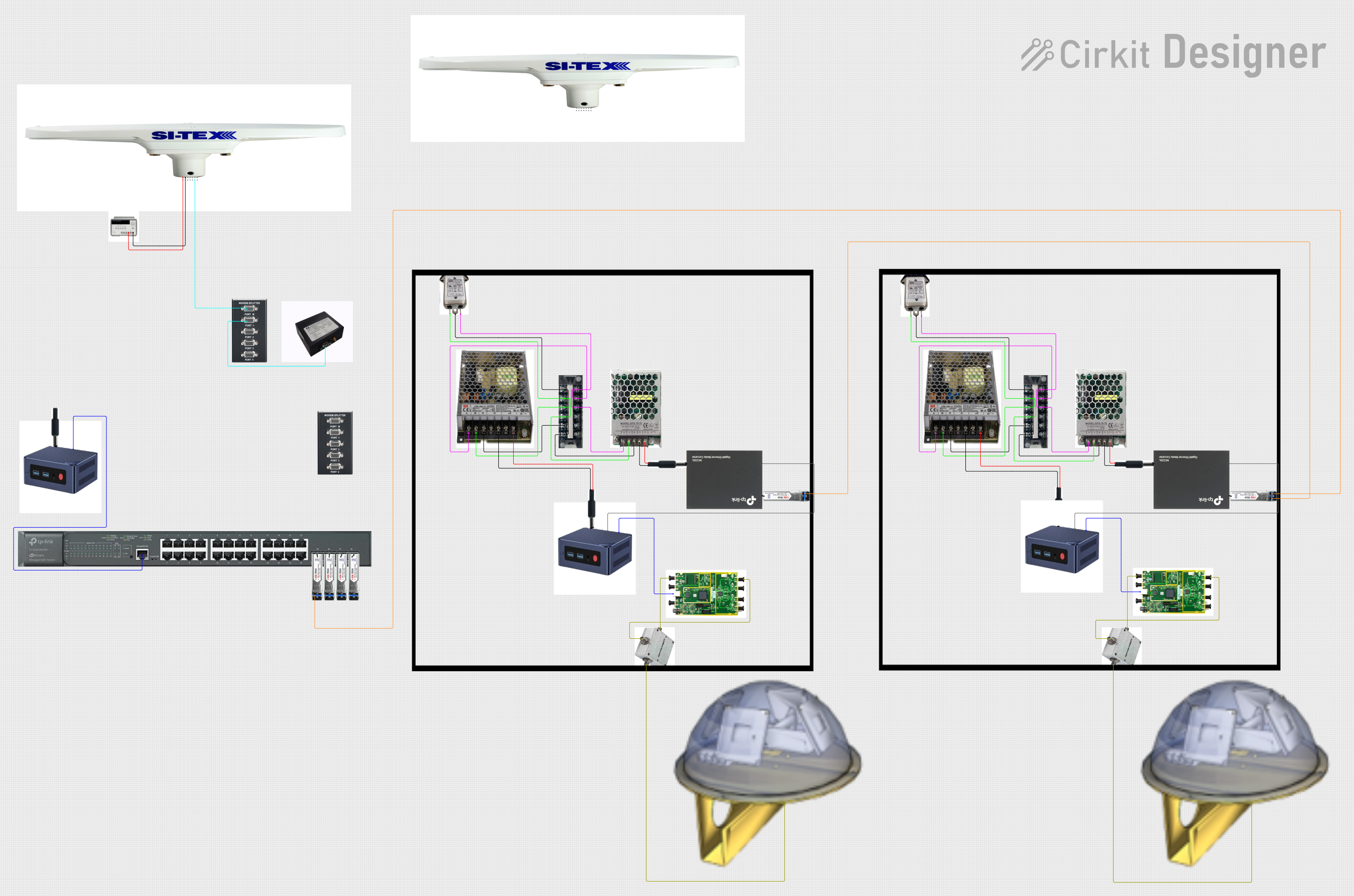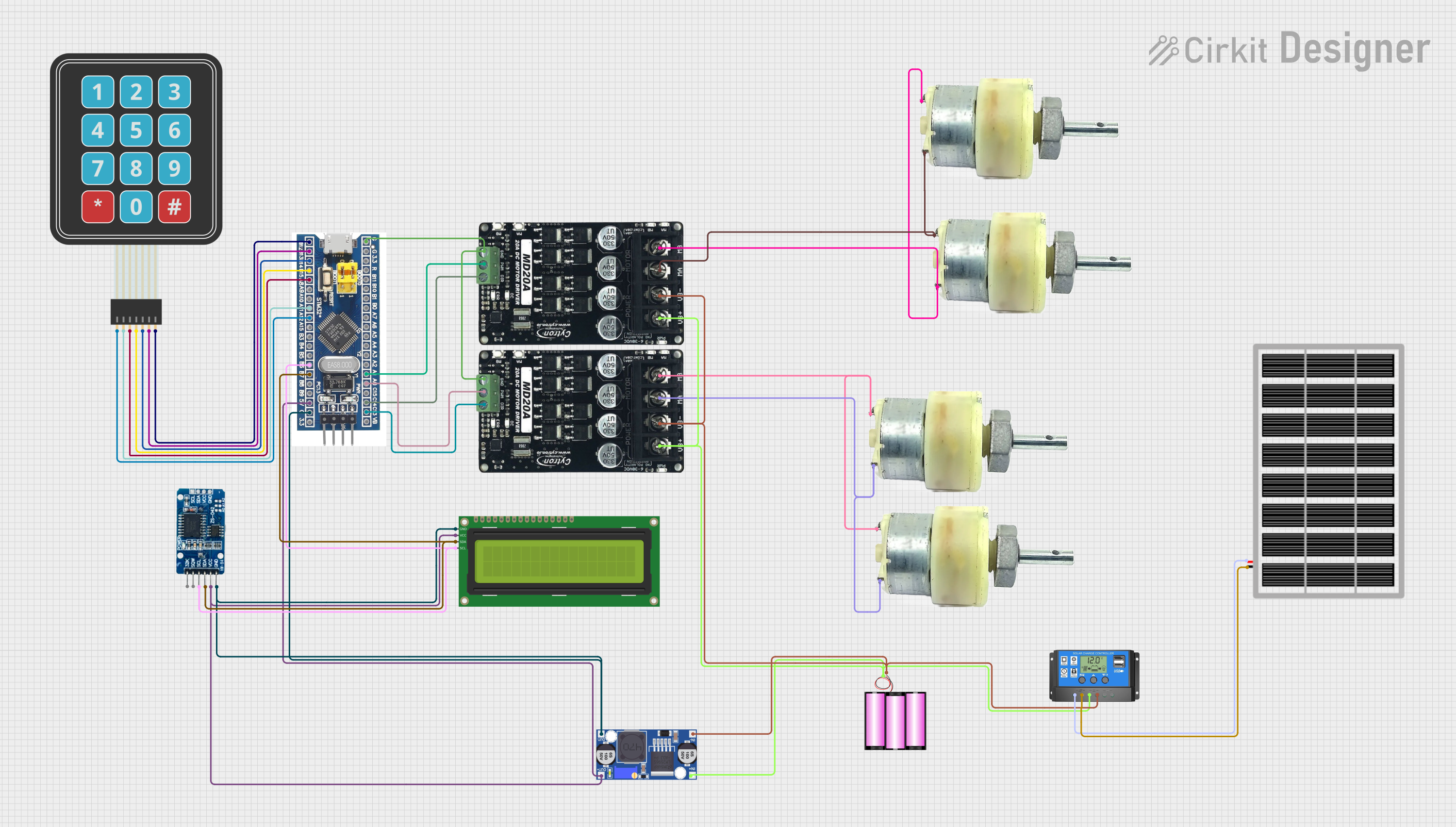
How to Use MBR20100CT: Examples, Pinouts, and Specs

 Design with MBR20100CT in Cirkit Designer
Design with MBR20100CT in Cirkit DesignerIntroduction
The MBR20100CT is a high-performance Schottky barrier rectifier diode designed for applications requiring high efficiency and low forward voltage drop. With a maximum reverse voltage of 100V and a forward current rating of 20A, this component is ideal for use in power supply circuits, rectification, and freewheeling diodes in various electronic systems. Its dual-diode configuration in a TO-220AB package makes it compact and suitable for high-current applications.
Explore Projects Built with MBR20100CT

 Open Project in Cirkit Designer
Open Project in Cirkit Designer
 Open Project in Cirkit Designer
Open Project in Cirkit Designer
 Open Project in Cirkit Designer
Open Project in Cirkit Designer
 Open Project in Cirkit Designer
Open Project in Cirkit DesignerExplore Projects Built with MBR20100CT

 Open Project in Cirkit Designer
Open Project in Cirkit Designer
 Open Project in Cirkit Designer
Open Project in Cirkit Designer
 Open Project in Cirkit Designer
Open Project in Cirkit Designer
 Open Project in Cirkit Designer
Open Project in Cirkit DesignerCommon Applications
- Power supply rectification
- DC-DC converters
- Freewheeling diodes
- Polarity protection circuits
- Battery charging systems
Technical Specifications
Key Specifications
| Parameter | Value |
|---|---|
| Maximum Reverse Voltage | 100V |
| Maximum Forward Current | 20A |
| Forward Voltage Drop (Vf) | 0.85V (typical at 10A) |
| Reverse Leakage Current | 1mA (at 100V) |
| Operating Temperature Range | -65°C to +150°C |
| Package Type | TO-220AB |
Pin Configuration
The MBR20100CT is a dual-diode Schottky rectifier with three pins. The pin configuration is as follows:
| Pin Number | Pin Name | Description |
|---|---|---|
| 1 | Anode 1 | Anode of the first diode |
| 2 | Cathode | Common cathode for both diodes |
| 3 | Anode 2 | Anode of the second diode |
Internal Schematic
The internal structure consists of two Schottky diodes sharing a common cathode, as shown below:
Anode 1 ----|>|----+
|
Anode 2 ----|>|----+---- Cathode
Usage Instructions
How to Use the MBR20100CT in a Circuit
- Rectification: Connect the cathode (Pin 2) to the positive terminal of the load and the anodes (Pins 1 and 3) to the AC input or DC source. This configuration allows the diode to rectify AC signals or block reverse current in DC circuits.
- Freewheeling Diode: Use the MBR20100CT across an inductive load (e.g., motor or relay) to prevent voltage spikes caused by back EMF. Connect the cathode to the positive terminal of the power supply and the anodes to the load.
- Polarity Protection: Place the MBR20100CT in series with the power supply to protect the circuit from reverse polarity. Ensure the cathode is connected to the positive terminal of the power source.
Important Considerations
- Heat Dissipation: The MBR20100CT can handle high currents, but it generates heat during operation. Use an appropriate heatsink with the TO-220AB package to maintain safe operating temperatures.
- Voltage Ratings: Ensure the reverse voltage of the circuit does not exceed 100V to prevent damage to the diode.
- Paralleling Diodes: If higher current handling is required, avoid directly paralleling multiple MBR20100CT diodes without proper current-sharing resistors.
Example: Using MBR20100CT with Arduino UNO
The MBR20100CT can be used in a simple DC motor control circuit with an Arduino UNO. Below is an example of how to use it as a freewheeling diode:
Circuit Description
- The MBR20100CT is connected across the motor terminals to protect the circuit from voltage spikes when the motor is turned off.
- The Arduino controls the motor via a transistor or MOSFET.
Code Example
// Example code for controlling a DC motor with Arduino UNO
// The MBR20100CT is used as a freewheeling diode to protect the circuit.
const int motorPin = 9; // PWM pin connected to the motor driver
void setup() {
pinMode(motorPin, OUTPUT); // Set motor pin as output
}
void loop() {
analogWrite(motorPin, 128); // Run motor at 50% speed
delay(5000); // Keep motor running for 5 seconds
analogWrite(motorPin, 0); // Stop the motor
delay(2000); // Wait for 2 seconds before restarting
}
Notes
- Ensure the MBR20100CT is properly connected across the motor terminals with the cathode to the positive terminal.
- Use a suitable transistor or MOSFET to drive the motor, as the Arduino cannot supply sufficient current directly.
Troubleshooting and FAQs
Common Issues
Excessive Heat Generation
- Cause: High forward current or insufficient heatsinking.
- Solution: Attach a heatsink to the TO-220AB package and ensure proper ventilation.
Reverse Voltage Breakdown
- Cause: Reverse voltage exceeds 100V.
- Solution: Verify the circuit design and ensure the reverse voltage is within the diode's rating.
High Reverse Leakage Current
- Cause: Operating the diode at high temperatures.
- Solution: Ensure the diode operates within the specified temperature range and use proper cooling.
Diode Not Conducting
- Cause: Incorrect pin connections.
- Solution: Double-check the pin configuration and ensure proper connections.
FAQs
Q1: Can I use the MBR20100CT for AC rectification?
A1: Yes, the MBR20100CT is suitable for AC rectification. Use both anodes (Pins 1 and 3) as inputs and the cathode (Pin 2) as the output.
Q2: What is the maximum current the MBR20100CT can handle?
A2: The MBR20100CT can handle a maximum forward current of 20A, provided adequate cooling is used.
Q3: Can I use the MBR20100CT without a heatsink?
A3: It is not recommended to use the MBR20100CT without a heatsink in high-current applications, as it may overheat and fail.
Q4: Is the MBR20100CT suitable for high-frequency applications?
A4: Yes, the MBR20100CT is suitable for high-frequency applications due to its fast switching characteristics and low forward voltage drop.